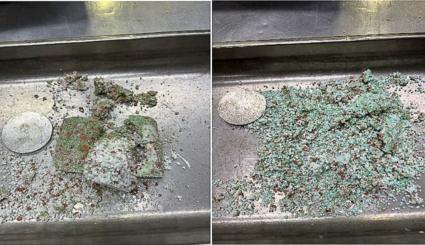The Nth Degree

Do soybeans need a nitrogen nudge?
Pushing the soybean to another yield level may require additional nitrogen. Ted Shambaugh is testing the theory on his family’s central-Illinois farm.
When it comes to soybean yield, TJ Shambaugh’s theory is the best defense is a good offense. “I try not to go overboard on inputs, but I don’t want to leave any yield out there that I might not be able to catch,” says Shambaugh, who farms with his family near Cerro Gordo, Ill.
With that in mind, Shambaugh put additional nitrogen (N) to the test in a 10-acre plot in 2014. He applied 10 gallons of 28% liquid nitrogen (30 pounds of actual N) at the R2 growth stage. It turned out to be a bumper year for soybeans in central Illinois. Shambaugh’s soybean yields came in around 72 bushels per acre (bpa) across the farm. However, he was somewhat surprised to find there wasn’t a hill of beans worth of yield difference between the acres that receive supplemental N and those that didn’t.
SET YIELD GOALS. Research studies show soil and fixed N are generally sufficient to supply N to 60 bpa. Nitrogen deficits tend to result when yields increase to 80 bpa and higher.
University of Illinois physiologist Fred Below sees soybeans as an undertapped market. “Most of the people who win yield contests and grow 100-plus-bushel beans either have manure or they put nitrogen on them,” Below says.
Soybeans need 4 to 5 pounds of nitrogen to produce each bushel, and they only get 50 to 60% of their N from their nodules. The rest has to come from the breakdown of soil organic matter or from supplementation. That leaves a lot of potential yield in the field, but with soybean prices hovering under $9, adding N doesn’t always pencil out, Below adds.
The good news for experimenters such as Shambaugh is that adding N is unlikely to ever ding yields. For the past two years, Below and his graduate students have run trials with seven different sources of N applied at 100 pounds to soybean fields at four different growing stages in three different locations around Illinois. “The results are fairly surprising—virtually never does N hurt yield,” he says. “The yield advantage ranges from no effect to an added 11.4 bushels. If I average everything—time, source and location—there was an average yield enhancement of 3.4 bushels.”
LESSONS LEARNED. “The results clearly have something to do with the condition of nodules to supply N at the time we apply,” Below says. Applying N early in the season to unstressed soybeans may make the soybean plant lazy and reduce N fixation, so timing is important. “My guess is if it’s cold and wet early, that’s the time you need to apply it early [preplant or V3] to your compromised nodules, and if there’s very high yield potential, you need to apply it in the reproductive stages,” Below explains.
Across all his trials, polymer-coated urea (ESN) worked the best, particularly for early applications at preplant or V3, Below says. Urea was another good performer, but Below recommends adding a urease inhibitor to minimize volatilization if you apply it in the reproductive stages. UAN and ammonia nitrate also performed well, but ammonium sulfate was the least effective source in his trials, he adds.
If you do choose to experiment with N in your soybean crop, make sure the rest of the crop’s needs are met. Below adds, “If you have something else limiting yield, like soil pH, nitrogen is not going to help you.”
Reprinted with permission, copyright 2016 Telvent DTN, LLC


